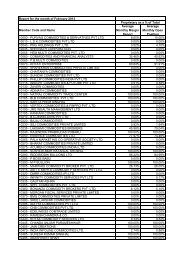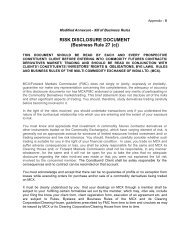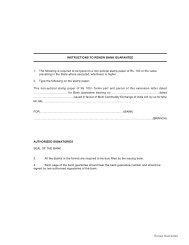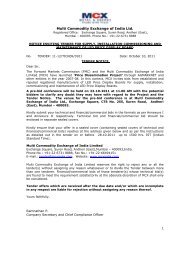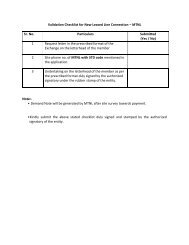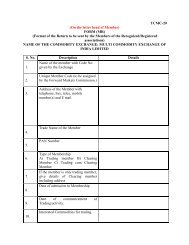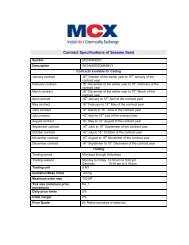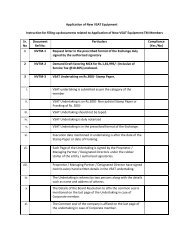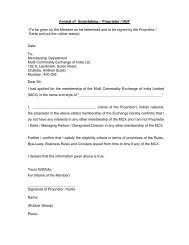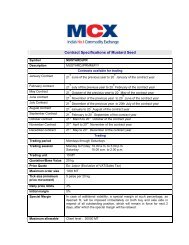Introduction, Contents, Foreword, From the Editorial Desk ... - MCX
Introduction, Contents, Foreword, From the Editorial Desk ... - MCX
Introduction, Contents, Foreword, From the Editorial Desk ... - MCX
You also want an ePaper? Increase the reach of your titles
YUMPU automatically turns print PDFs into web optimized ePapers that Google loves.
Healthy market growth<br />
– in need of policy<br />
initiatives<br />
Markets facilitating <strong>the</strong> trade in<br />
commodity-based derivatives in<br />
India are regulated under <strong>the</strong> Forcorrection<br />
of prices pending for<br />
long. The double whammy is due<br />
to volatility adversely impacting<br />
food prices and input costs and,<br />
thus, <strong>the</strong> bottom lines of industries<br />
using <strong>the</strong>m as raw materials. The<br />
state machinery often tries to<br />
intervene in <strong>the</strong> market to cushion<br />
both sides of <strong>the</strong> market by absorbing<br />
such volatility often at <strong>the</strong> cost<br />
of <strong>the</strong> exchequer.<br />
The moot point is that risks associated<br />
with commodity price spikes<br />
and volatility have, in recent times,<br />
risen considerably and affected<br />
more and more economic entities<br />
that are being exposed to risks<br />
associated with increasing volatility<br />
while being ever more aware of<br />
<strong>the</strong> impact of this exposure on <strong>the</strong>ir<br />
economic pursuits. While <strong>the</strong>y<br />
seek to cover <strong>the</strong>se risks through<br />
hedging against commodity price<br />
movements, how attractive does<br />
<strong>the</strong> market <strong>the</strong>y approach appear.<br />
The E&Y survey found nearly all<br />
respondents to hedge through<br />
recourse to plain vanilla products<br />
alone. Significantly, about 68% of<br />
<strong>the</strong>m had a hedging horizon of less<br />
than three months, indicating that<br />
<strong>the</strong>y could not explore possibilities<br />
of long-term hedging to protect<br />
long-term business cash flows.<br />
Clearly, <strong>the</strong>re is a demand for<br />
safe hedging through a variety of<br />
hedging instruments, many more<br />
than what <strong>the</strong> market currently<br />
provides. While OTC forward<br />
contracts can fulfil <strong>the</strong> demand<br />
for customised hedging products,<br />
<strong>the</strong>y lack <strong>the</strong> kind of liquidity<br />
and safety that exchange-traded<br />
and exchange-cleared derivatives<br />
provide. The market for <strong>the</strong> latter,<br />
unfortunately, seems to have<br />
run into a wall as <strong>the</strong> supply of<br />
67.4%<br />
To 11.5% – Companies’<br />
net profits gyrated, as<br />
wildly as this, in <strong>the</strong> past 3<br />
quarters. Surely, a robust risk<br />
management tool like commodity<br />
futures could have helped<br />
lock in input costs at<br />
predetermined<br />
levels.<br />
products has scarcely been able to<br />
match <strong>the</strong>ir ability and needs. The<br />
reason, as has been elucidated in<br />
several fora by several constituencies<br />
in recent years, is <strong>the</strong> slow pace<br />
of policy and institutional reforms<br />
for nurturing <strong>the</strong> use of commodity<br />
derivatives by <strong>the</strong> stakeholders<br />
in India.<br />
A PwC & <strong>MCX</strong> Joint Endeavour | 13




